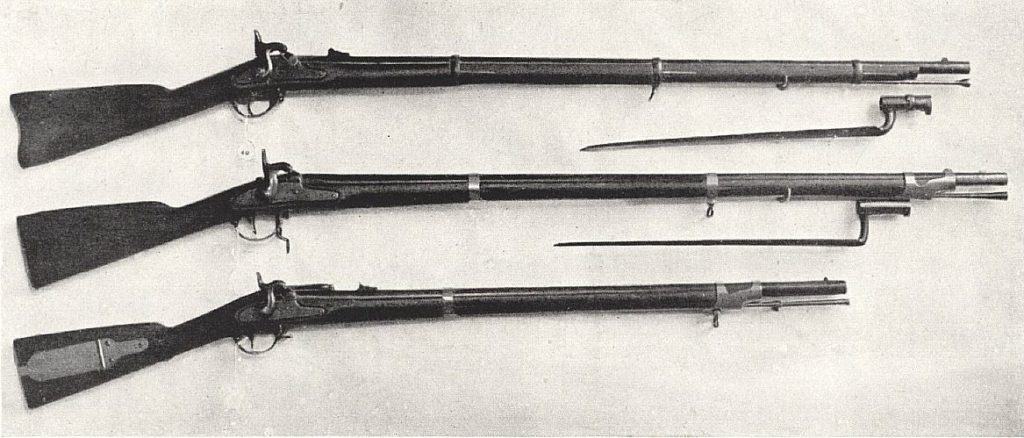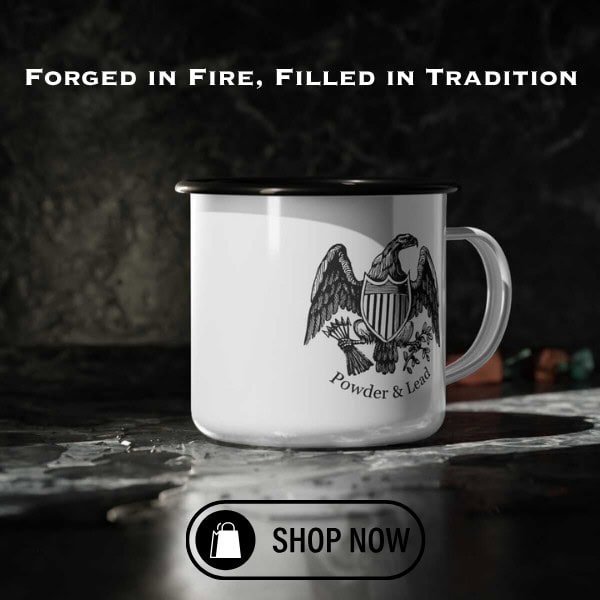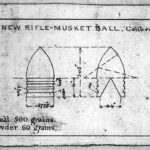
Introduction
The Civil War was a turning point in military history, marking the last major conflict where muzzle-loading rifle-muskets dominated the battlefield. These firearms, the result of centuries of development, shaped combat tactics, strategy, and the outcome of the war itself. Understanding the role of muskets in the Civil War requires tracing their evolution, analyzing their ballistic performance, and exploring their tactical use in battle.
Evolution of the Musket: From Arquebus to Rifle-Musket
The origins of the musket can be traced back to the early 15th century, when hand cannons gave way to the arquebus—a rudimentary firearm ignited by a burning match. By the 16th century, the matchlock musket emerged, providing soldiers with greater range and firepower. However, its slow reload speed and susceptibility to weather led to the development of the flintlock musket in the 17th century. This design, widely used in conflicts such as the American Revolution, offered improved reliability and efficiency.
By the mid-19th century, musket technology had taken another leap forward. The percussion cap system, introduced in the early 1800s, replaced the unreliable flintlock mechanism. Instead of relying on a flint to strike steel, the percussion system used a small copper cap filled with mercury fulminate, which ignited the powder charge upon impact from the hammer. This innovation, coupled with advancements in rifling, led directly to the rifle-musket—the standard infantry weapon of the Civil War.
The Dominant Firearms of the Civil War
During the Civil War, three primary rifle-muskets were used:
- Springfield Model 1861 – The most widely issued firearm of the Union Army, this .58 caliber rifle-musket featured a 40-inch barrel, three-groove rifling with a 1:72 twist rate, and an effective range of 300–500 yards. Manufactured at Springfield Armory and by private contractors, it was praised for its reliability and accuracy.
- Enfield Pattern 1853 – Imported from Britain, the .577 caliber Enfield P53 was highly favored by both Union and Confederate forces. With its progressive-depth rifling and long-range accuracy, it was considered superior to many American-made muskets in terms of craftsmanship.
- Lorenz Rifle – An Austrian-made firearm, the Lorenz rifle was used extensively by both sides. Chambered in .54 or .58 caliber, it was known for its robust construction but suffered from inconsistent bore dimensions, which could impact accuracy.
Ballistics and Combat Performance
The defining characteristic of the Civil War rifle-musket was its rifled barrel, which imparted spin to the projectile, greatly improving accuracy over traditional smoothbore muskets. The standard ammunition was the Minie ball, a soft-lead, hollow-based bullet designed to expand upon firing, creating a tight seal in the rifling and maximizing velocity.
- Muzzle velocity: ~950–1,100 feet per second (fps)
- Effective range: 300–500 yards (capable of killing at greater distances)
- Lethality: The conical Minie ball caused catastrophic wounds, shattering bones and creating large exit wounds, leading to high rates of battlefield amputations.
Despite the extended range of these weapons, many Civil War battles still devolved into close-range firefights. Poor training, battlefield smoke, and command doctrines rooted in Napoleonic tactics often negated the rifle-musket's long-range potential. As a result, engagements were often fought at ranges of 100–200 yards, despite the rifle-musket’s theoretical accuracy beyond 400 yards.
Tactical and Strategic Impact
The introduction of rifle-muskets fundamentally altered battlefield tactics. The increased accuracy and range made massed line formations increasingly vulnerable, yet military leaders were slow to adapt. Traditional bayonet charges often ended in disaster against entrenched riflemen. Battles such as Gettysburg and Antietam demonstrated the devastating impact of rifled muskets, where defensive positions shredded advancing formations.
One of the most significant tactical adaptations to rifle-muskets was the rise of entrenchments and field fortifications. By the latter years of the war, both Union and Confederate forces relied heavily on trench warfare, a grim precursor to World War I.
Famous Units and Commanders Associated with Rifle-Muskets
Though many soldiers carried rifle-muskets, certain units became famous for their skill with these weapons:
- The Iron Brigade – This elite Union infantry brigade, known for their distinctive black hats, was renowned for their discipline and effectiveness with Springfield Model 1861 rifle-muskets.
- The 20th Maine – Led by Colonel Joshua Chamberlain, they famously held the Union left flank at Little Round Top at Gettysburg, using their rifle-muskets to repel Confederate assaults before launching a dramatic bayonet charge.
- Confederate Sharpshooters – Unlike Union sharpshooters, who were often equipped with Sharps breechloaders, many Confederate marksmen relied on Enfield P53 rifle-muskets, taking advantage of their superior British-made barrels.
The End of the Musket Era
By the war’s end, breech-loading and repeating rifles had begun to replace muzzle-loading rifle-muskets. The Spencer and Henry repeating rifles, capable of firing multiple rounds before reloading, demonstrated the obsolescence of single-shot muzzleloaders. Despite initial resistance from conservative military leaders, breechloaders became the standard by the late 1860s, marking the official end of the musket era.
Legacy of the Civil War Musket
The impact of the Civil War rifle-musket was profound. It was the weapon that bridged the gap between Napoleonic warfare and modern combat, forcing tactical adaptations that would later influence global military strategy.
Even today, original Springfield, Enfield, and Lorenz muskets are highly prized among collectors, historians, and reenactors. The devastating lethality of these weapons also contributed to the evolution of battlefield medicine, particularly in amputation techniques and wound care.
Conclusion
The Civil War rifle-musket was more than just a weapon—it was a catalyst for change in military history. Its deadly efficiency reshaped the battlefield, altering tactics and strategy in ways that would reverberate long after the war ended. As the last dominant muzzle-loading firearm in American history, the rifle-musket remains an enduring symbol of the conflict that defined a nation.
Read more here:
If you wish to join discussions about these weapons check out some of this forums:
If you know of any forums or sites that should be referenced on this listing, please let us know here.







